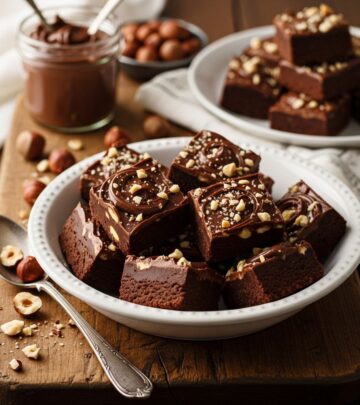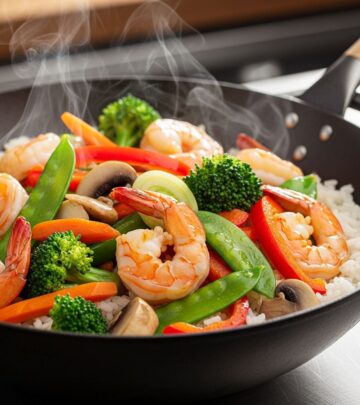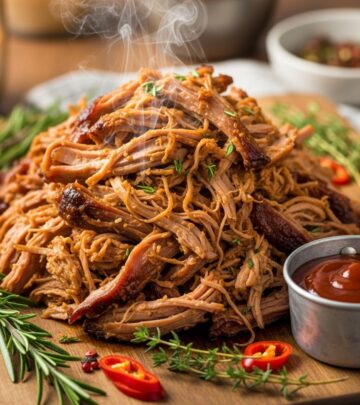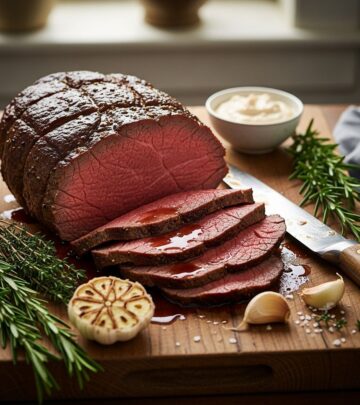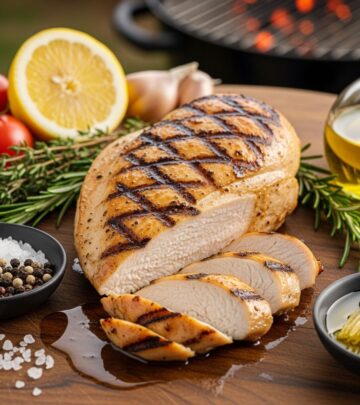The Ultimate Guide to Classic Beef Stew: Tips, Techniques, and Variations
A heartwarming meal that transforms humble ingredients into a soulful, flavor-packed feast.
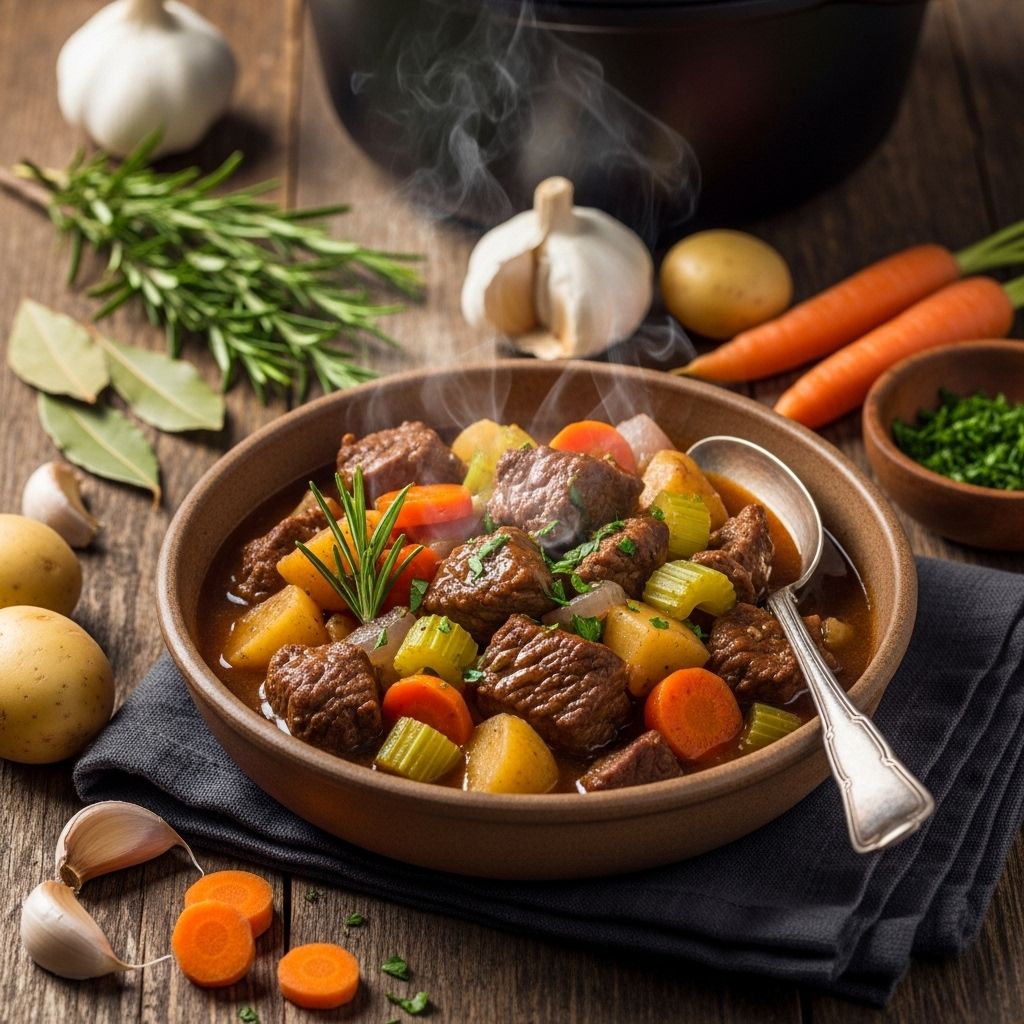
Image: HearthJunction Design Team
The Ultimate Guide to Classic Beef Stew
Few dishes embody comfort, flavor, and heartiness quite like a classic beef stew. This staple has earned its place in culinary tradition thanks to its robust flavors, meltingly tender beef, and versatility for customization. Whether you’re a seasoned cook or just beginning your culinary adventures, mastering beef stew can be transformative for your repertoire. This guide walks you through every essential aspect: ingredient choices, preparation steps, expert tips, step-by-step instructions, and delicious variations for slow cooker and Instant Pot methods.
Table of Contents
- Key Ingredients for Beef Stew
- Step-by-Step Instructions
- Pro Tips & Tricks
- Beef Stew Variations
- Serving & Storage Suggestions
- Frequently Asked Questions
Key Ingredients for a Classic Beef Stew
- Beef Chuck: The ideal cut for stew due to its marbling and collagen, which break down into tenderness and flavor during a slow simmer.
- Vegetables (Mirepoix): A traditional base of onion, carrots, and celery—known in French cuisine as mirepoix—lays the aromatic foundation for depth and complexity.
- Tomato Paste: Adds concentrated umami and a hint of sweetness, especially when slightly caramelized during cooking.
- Beef Broth: Use low-sodium stock to better control seasoning levels and avoid excess saltiness.
- Red Wine: Adds balanced acidity and complexity. Choose a dry red you’d enjoy drinking—wine flavor enhances the richness of the stew.
- Worcestershire Sauce: Subtle, but helps deepen the savory notes, amplifying all the dish’s flavors.
- Baby Potatoes: Hold their shape well throughout cooking and contribute natural starch for thickening.
- Peas: Add bursts of color, sweet flavor, and textural contrast to finish the dish.
Ingredient Table
| Ingredient | Purpose | Tips for Best Results |
|---|---|---|
| Beef Chuck, cut in 1″ cubes | Protein, tender texture, rich flavor | Brown for maximum flavor; simmer low & slow |
| Onion, Carrots, Celery (Mirepoix) | Aromatic foundation | Cook until softened to release flavors |
| Tomato Paste | Umami, color, sweetness | Cook out raw flavor; caramelize slightly for depth |
| Beef Broth | Savory liquid base | Low-sodium allows seasoning control |
| Red Wine | Balanced acidity, complexity | Any dry table wine; no need for expensive bottle |
| Worcestershire Sauce | Savory depth | Small amounts make a big difference |
| Baby Potatoes | Starch, texture, holds shape | Cut bite-sized; don’t overcook |
| Peas | Color, sweetness, contrast | Add at end to keep bright and crisp |
How to Make Classic Beef Stew: Step-by-Step Instructions
- Brown the Beef:
Heat oil in a large Dutch oven or heavy pot over medium-high. Pat the beef cubes dry. Brown in batches, seasoning generously with salt and pepper. Don’t overcrowd the pan—this ensures a deep sear and rich flavor. Remove browned beef and set aside.
- Build Flavor with Mirepoix:
Add chopped onion, carrots, and celery to the pot, using more oil if needed. Sauté until softened—this releases their inherent sweetness and creates an aromatic base.
- Caramelize Tomato Paste:
Push the vegetables to one side and add tomato paste. Cook until it darkens and begins to stick slightly, concentrating its flavor and building color for the stew.
- Deglaze with Red Wine:
Pour in the wine, scraping up brown bits from the pot’s bottom—these are loaded with flavor. Simmer for a few minutes to mellow the wine’s acidity.
- Add Liquids & Potato:
Stir in the browned beef, potatoes, beef broth, and Worcestershire sauce. Bring to a simmer. Lower the heat, cover, and cook gently until beef is tender—typically 1.5 to 2 hours. Check and adjust salt as needed.
- Finish:
Once the beef is fork-tender, stir in peas. If stew is thinner than desired, mash a few potatoes into the liquid or let it simmer uncovered to thicken.
- Serve:
Ladle hot stew into bowls. Garnish with chopped fresh parsley or thyme if desired. Serve with crusty bread for soaking up the flavorful broth.
Pro Tip:
Resist the urge to rush the simmering step. Low and slow cooking transforms tough beef into succulent, melt-in-the-mouth bites and develops a stew with maximum flavor.
Pro Tips & Techniques
- Dry Meat Before Searing: Pat beef dry with paper towels before browning for a crisp sear.
- Layer Seasoning: Season at every step—not just at the end—for deeper complexity.
- Thickening the Stew: If you prefer a thicker gravy, mash some of the potatoes or whisk a cornstarch slurry (mix equal parts cornstarch and cold water, then stir into the simmering stew).
- Acidity Adjustments: The wine balances the umami and richness. If wine is omitted, try adding a splash of balsamic vinegar or a squeeze of lemon juice at the end.
- Salting Tips: Add a little salt, taste, and adjust after it’s cooked; flavors intensify as stew reduces.
Beef Stew Variations
- Slow-Cooker Red Wine Beef Stew: Brown beef and sauté vegetables as above, then combine all ingredients in a slow cooker. Cook on low for 7-8 hours or high for 4-5 hours, until beef is tender. Add peas in the final 30 minutes.
- Instant Pot Beef Stew: For speed lovers, use sauté mode for browning as above, then pressure cook with all other ingredients (except the peas) for 35 minutes. Natural release for 10 minutes, stir in peas, and let rest a few more minutes before serving.
- Vegetable Beef Stew: Omit the beef and use more hearty veggies, beans, or plant-based proteins for a vegetarian spin that is robust and satisfying.
Serving & Storage Suggestions
- Best Served With: Crusty bread, garlic toast, or fluffy mashed potatoes.
- Refrigeration: Store cooled stew in airtight containers for up to 4 days. Flavors deepen—and stew tastes even better—after a day’s rest.
- Freezing: Freeze portions up to 3 months. Thaw overnight in refrigerator then gently reheat on stove, adding a splash of stock to loosen if needed.
Frequently Asked Questions (FAQs)
Q: Can I substitute a different cut of beef?
A: Chuck roast is preferred for its marbling, but brisket or round cuts also work. Avoid lean stew beef, as it can become dry and tough.
Q: What can I add to make my stew even heartier?
A: Try mixing in parsnips, turnips, or rutabaga with your potatoes. Barley is another great addition for more texture and nutritional value.
Q: Why is my beef stew tough?
A: Undercooking or cooking at too high a temperature is the usual culprit. Let stew cook gently for the full recommended time for best results.
Q: My stew is too thin. What can I do?
A: Mash a few potatoes into the broth, simmer uncovered to reduce, or stir in a slurry of cornstarch and water to thicken quickly.
Q: Is it possible to make beef stew ahead?
A: Absolutely! Flavor improves after a day in the fridge. Reheat gently and adjust seasoning before serving.
Final Thoughts
Homemade beef stew is a rewarding and customizable dish, perfect for welcoming winter nights, feeding a hungry crowd, or simply enjoying classic comfort at home. Experiment with your favorite root vegetables, herbs, and finishes. Most importantly: don’t rush the process—allow the time for the flavors and textures to reach their full potential.
References
- https://www.delish.com/cooking/recipe-ideas/a26258692/irish-stew-recipe/
- https://www.delish.com/cooking/recipe-ideas/a23515497/easy-beef-stew-recipe/
- https://www.mydailydelish.com/recipes/instant-pot-beef-stew
- https://www.youtube.com/watch?v=kk3J7WO7ENE
- https://www.simplyrecipes.com/easy-beef-stew-recipe-6829610
Read full bio of Anjali Sayee





